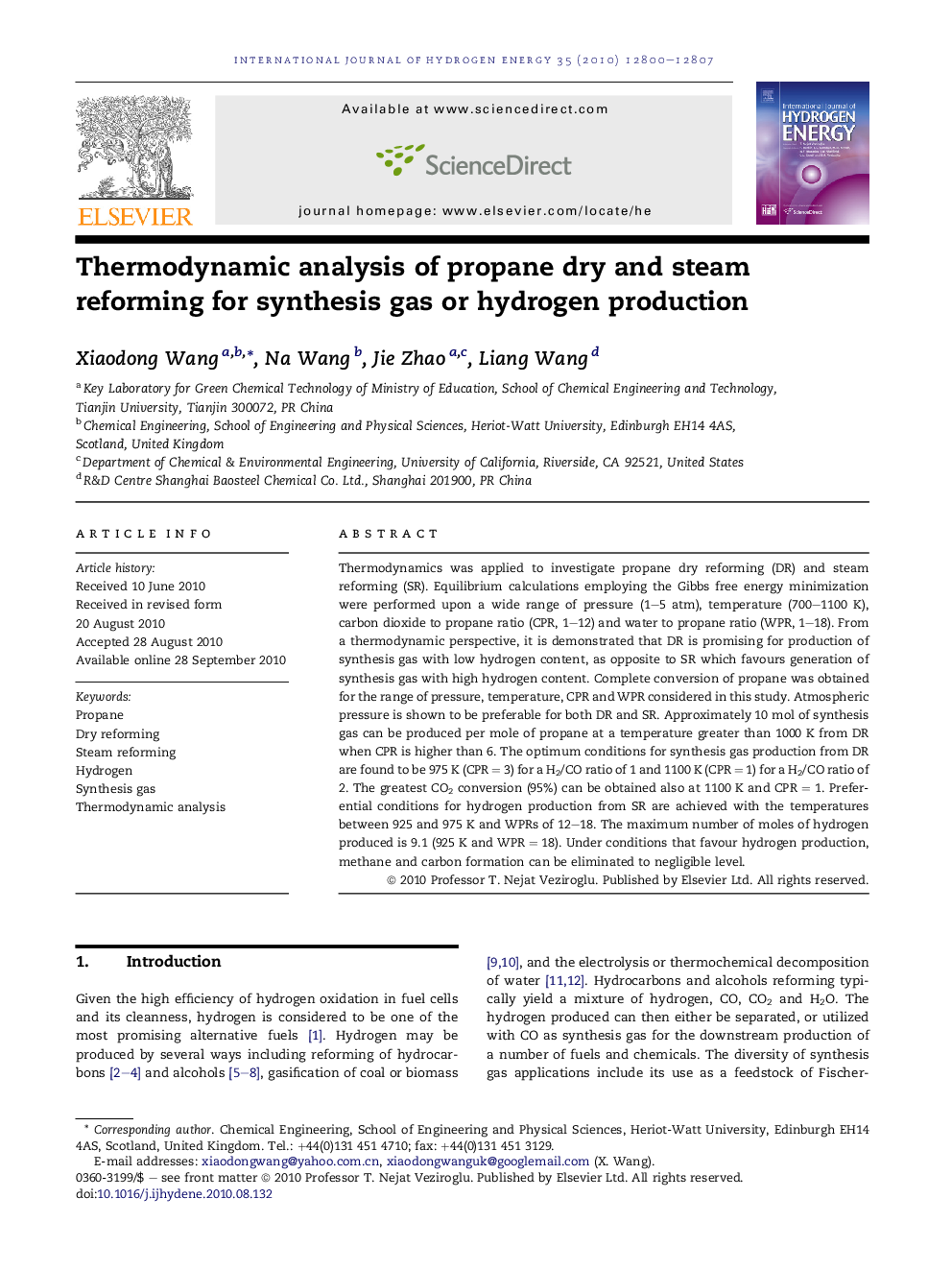| Article ID | Journal | Published Year | Pages | File Type |
|---|---|---|---|---|
| 1279921 | International Journal of Hydrogen Energy | 2010 | 8 Pages |
Thermodynamics was applied to investigate propane dry reforming (DR) and steam reforming (SR). Equilibrium calculations employing the Gibbs free energy minimization were performed upon a wide range of pressure (1–5 atm), temperature (700–1100 K), carbon dioxide to propane ratio (CPR, 1–12) and water to propane ratio (WPR, 1–18). From a thermodynamic perspective, it is demonstrated that DR is promising for production of synthesis gas with low hydrogen content, as opposite to SR which favours generation of synthesis gas with high hydrogen content. Complete conversion of propane was obtained for the range of pressure, temperature, CPR and WPR considered in this study. Atmospheric pressure is shown to be preferable for both DR and SR. Approximately 10 mol of synthesis gas can be produced per mole of propane at a temperature greater than 1000 K from DR when CPR is higher than 6. The optimum conditions for synthesis gas production from DR are found to be 975 K (CPR = 3) for a H2/CO ratio of 1 and 1100 K (CPR = 1) for a H2/CO ratio of 2. The greatest CO2 conversion (95%) can be obtained also at 1100 K and CPR = 1. Preferential conditions for hydrogen production from SR are achieved with the temperatures between 925 and 975 K and WPRs of 12–18. The maximum number of moles of hydrogen produced is 9.1 (925 K and WPR = 18). Under conditions that favour hydrogen production, methane and carbon formation can be eliminated to negligible level.
